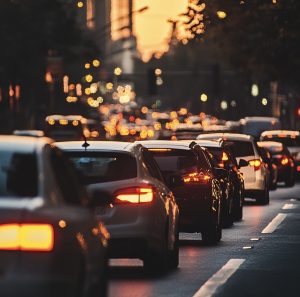Traffic congestion is an ever-growing problem across the United States. As more vehicles hit the roads, navigating traffic has become increasingly challenging. Whether you’re a seasoned driver or a newcomer, brushing up on your driving skills can help you stay safe and stress-free on the road. Here are some of our favorite traffic-driving tips.
The Rise of Traffic Congestion

Over the years, traffic congestion has been steadily increasing in every U.S. state. According to the Texas A&M Transportation Institute, the average American commuter spends about 54 hours a year stuck in traffic. That’s more than two full days!
Here are some eye-opening statistics:
- In Los Angeles: Drivers spend an average of 119 hours per year in traffic.
- In New York City: Commuters lose about 100 hours annually to traffic jams.
- In San Francisco: The average driver spends 103 hours a year in traffic congestion.
This trend isn’t just limited to big cities. Smaller cities and suburban areas are also experiencing significant increases in traffic. The reasons are varied: population growth, urban sprawl, and the ever-increasing number of cars on the road.
Driving Tips for Navigating Traffic

Given the rising congestion, it’s crucial to adopt strategies that can help you navigate traffic more efficiently and safely. Here are some essential traffic tips:
- Plan Your Route:
- Use GPS and traffic apps to find the quickest and least congested routes.
- Check traffic reports before you leave to avoid known trouble spots.
- Avoid Peak Hours:
- If possible, travel during off-peak times to reduce the time you spend in traffic.
- Consider flexible work hours or telecommuting if your job allows it.
- Stay Calm and Patient:
- Traffic can be frustrating, but staying calm helps you make better decisions.
- Practice deep breathing or listen to calming music to keep stress levels down.
- Maintain a Safe Distance:
- Keep a safe following distance to allow for sudden stops.
- The “three-second rule” is a good guideline: Stay at least three seconds behind the car in front of you.
- Use Defensive Driving Strategies:
- Always be aware of your surroundings and anticipate the actions of other drivers.
- Avoid distractions like texting or eating while driving.
- Use Technology Wisely:
- Modern cars come equipped with various safety features like adaptive cruise control and lane-keeping assist. Use them to your advantage.
- However, don’t rely solely on technology; always stay alert and in control.
- Keep Your Vehicle in Good Condition:
- Regular maintenance can prevent breakdowns that contribute to traffic delays.
- Ensure your tires, brakes, and lights are in top condition.
- Merge Early and Safely:
- When you see a lane ending ahead, merge early to avoid last-minute rushes.
- Signal your intentions to let other drivers know your plans.
 Traffic congestion is a growing issue, but with the right defensive driving strategies, you can navigate it more effectively. Staying informed, practicing defensive driving, and maintaining your vehicle can make a significant difference in your driving experience.
Traffic congestion is a growing issue, but with the right defensive driving strategies, you can navigate it more effectively. Staying informed, practicing defensive driving, and maintaining your vehicle can make a significant difference in your driving experience.
Remember, if you want to brush up on your defensive driving skills, reduce your insurance rates, or dismiss a traffic ticket, consider taking an online course with Comedy Defensive Driving. It’s a fun and engaging way to learn. Even better, it is written by real comedians. Drive safe, stay calm, and laugh a little along the way!
